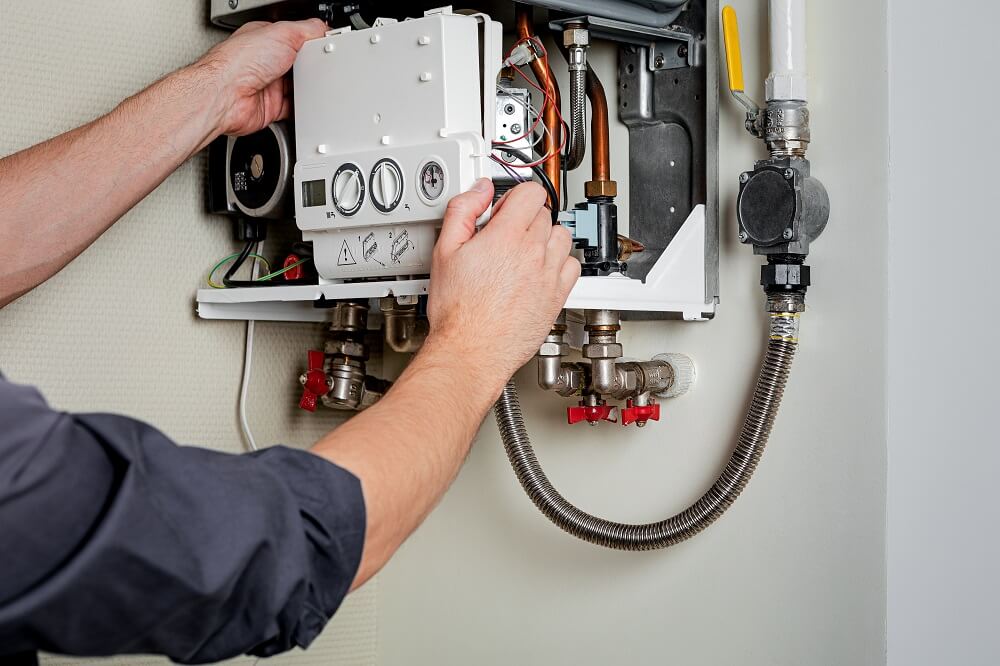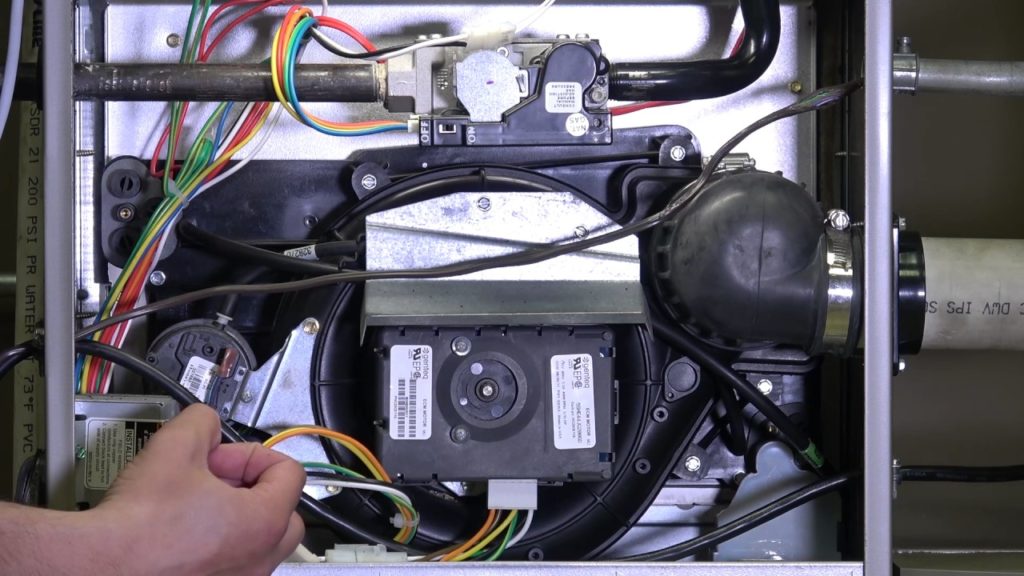During a power outage, we often receive inquiries regarding gas furnaces such as: Is it possible for a gas furnace to operate without electricity? My gas furnace isn’t functioning after a power interruption. What steps can I take?
Rest assured that you can take proactive measures to cope with power outages or potential problems with your furnace following one. However, it’s important to note that even though gas fuels your furnace, there are specific parts that depend on electricity for operation, including:
- Circuit boards, transmit information between the thermostat and the furnace.
- Relays, which are electrically operated switches within the system.
- Blower motors, use electricity to circulate warm air through the duct system and push waste products out through the flue.
It’s worth noting that during a power outage, the furnace’s safety system prevents it from turning on, rendering it inoperable.

What Can You Do When Your Gas Furnace Is Turned Off During a Blackout?
In the event of a blackout, there are certain measures you can take to ensure your safety and warmth if your gas furnace is not operational. These include:
- Wearing warm clothing and utilizing blankets to stay warm
- Considering alternative heating sources like a generator, wood-burning stove, or properly-ventilated fireplace to heat your home
- Closing doors to unused rooms to conserve heat and direct warmth to occupied areas
- Checking that the gas valve leading to your furnace is open if you suspect a gas outage
- Having a backup plan in place in case of extended power outages or lack of access to other heating options
It is crucial to note that you should never attempt to power your furnace with a portable generator or other backup power sources as it can be hazardous and pose a threat to your home and its occupants. If your furnace is not functioning correctly after power has been restored, it’s advisable to contact an HVAC company for professional assistance.
If Your Gas Furnace Ceases to Function After a Power Outage, What Steps should you take?
If your gas furnace fails to work after a power outage, here are some steps to help you restart it:
- Ensure that your furnace is switched on.
- Check the control panel for any error messages that may require repair or replacement. The furnace will not function until this issue is resolved.
- Inspect for any blown fuses or a tripped breaker.
- Verify that the venting system is free of snow or ice blockages.
- The safety lock may have been triggered. If the reset button has been pressed repeatedly during furnace restart attempts, it may have activated a child-safety lock mechanism. Wait for a short period before firmly pressing the reset button once.
- Check your thermostat to ensure that it is online and set to a high enough temperature to engage your furnace and warm up your home.
It’s worth noting that if you encounter any difficulty or uncertainty during the restart process, it’s advisable to contact a licensed HVAC technician for assistance. If you need any additional services, you can visit our furnaces page and learn more.

Let’s Learn Some More Details About the Electrical Components of a Gas Furnace
Igniter of Your Furnace
The question at hand is whether a gas furnace requires electricity. If you use a gas furnace for heating purposes, the only electrical expenses are associated with powering the fan motor and the igniter. The igniter’s role is to light the flame, and it only functions for a brief period, resulting in the clicking noise heard during startup. The electricity used for ignition is minimal. While an older model with a glow-type igniter may consume more energy, they are now rare. If you happen to own a gas furnace that still employs this type of igniter, replacing it with a newer model can result in even greater cost savings.
Fan Motor in Gas Furnaces
The sole remaining electrical necessity for a furnace is to power the fan, which has benefited from advancements in technology over the past few years. The primary factor contributing to energy efficiency in fans has been the invention of the variable-speed motor. Earlier models used a single-speed motor that could only operate at one speed, namely at maximum capacity. This technology is less sophisticated than even that of ceiling fans. Conversely, a gas furnace equipped with a variable-speed motor can function at various output levels. When conditions are moderate, less heating or cooling is required. An older gas furnace is unable to lower the output to a less intense level, resulting in continuous operation at maximum capacity and energy consumption. In contrast, a variable-speed fan can reduce its output as needed, resulting in energy savings.
Variable Speed
Rephrased: Variable-speed models of gas furnaces can save a significant amount of energy compared to single-speed models. While a standard fan motor can use up to 400 watts per hour, a variable-speed motor only requires 75 watts per hour. This is the most obvious way in which variable-speed units conserve electricity, but they also contribute to energy savings in other ways. For instance, they can help maintain a more consistent temperature in your home by operating at a lower speed and delivering a more steady airflow. This reduces the need for frequent on-and-off operation, which can be highly inefficient in terms of energy consumption. By avoiding this stop-and-go pattern, your gas furnace can operate more efficiently, ultimately saving you both energy and money.
